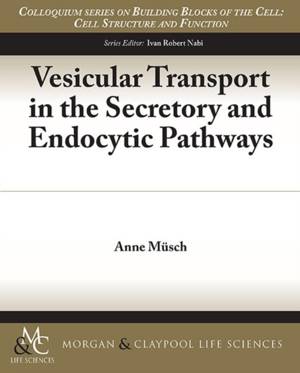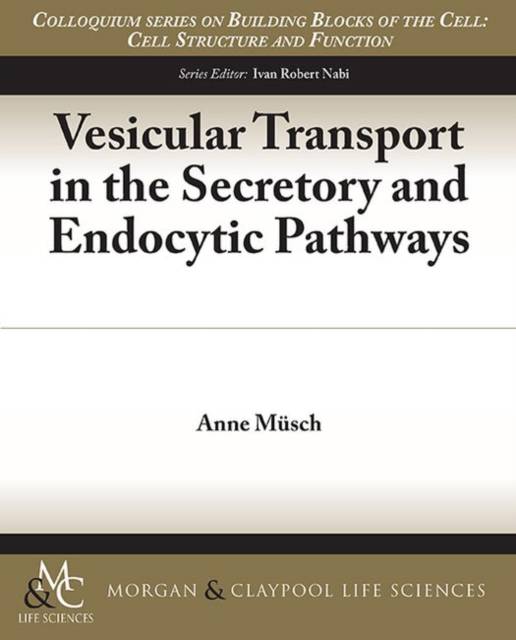
Door een staking bij bpost kan je online bestelling op dit moment iets langer onderweg zijn dan voorzien. Dringend iets nodig? Onze winkels ontvangen jou met open armen!
- Afhalen na 1 uur in een winkel met voorraad
- Gratis thuislevering in België vanaf € 30
- Ruim aanbod met 7 miljoen producten
Door een staking bij bpost kan je online bestelling op dit moment iets langer onderweg zijn dan voorzien. Dringend iets nodig? Onze winkels ontvangen jou met open armen!
- Afhalen na 1 uur in een winkel met voorraad
- Gratis thuislevering in België vanaf € 30
- Ruim aanbod met 7 miljoen producten
Zoeken
Omschrijving
The concept of vesicular traffic as a means of protein transport in and out of cells and between membrane compartments has been established since the 1960s. Its basic principles are beautifully simple, yet the details of protein transport are complex enough to find novel classes of transport vesicles, and trafficking itineraries still being described to date. In this treatise, the reader will be introduced to mechanisms of vesicle sculpting, cargo selection, vesicle targeting, and vesicle consumption that have emerged as common characteristics of multiple transport steps in the exocytic and endocytic pathways. These fundamentals also reveal the basis for the specificity and selectivity of individual transport steps. We will further discuss how protein transport might lead to the establishment and maintenance of the endomembrane system of eukaryotic cells. The concepts for these mechanisms are based on experimental evidence combined with mathematical modeling that can disclose the minimal requirements for the generation of the distinct membrane compartments. Table of Contents: Compartmentalization Is a Hallmark of Eukaryotic Cells / Organelles Can Be Classified Based on Their Origin / There Are Multiple Entry Points Into the Endomembrane System and a Network of Connecting Trafficking Routes / There Are Exceptions and Extensions to the Classic Trafficking Itineraries / A Mathematical Model Can Explain How Organelle Size Is Established and Maintained / Coats and SNAREs Constitute the Core Machinery for Vesicle Budding and Fusion / A Mathematical Model Explains How Coats and SNAREs Are Sufficient to Generate Organelle Identity / How Vesicle Formation Is Linked to Cargo Incorporation / RabGTPases Are the Master Regulators of Vesicular Traffic / The Mechanisms and Physiological Roles of Endocytosis / Models for Protein Transport in the Golgi Apparatus / Summary / Acknowledgments / References / Author Biography
Specificaties
Betrokkenen
- Auteur(s):
- Uitgeverij:
Inhoud
- Aantal bladzijden:
- 125
- Taal:
- Engels
- Reeks:
Eigenschappen
- Productcode (EAN):
- 9781615046584
- Verschijningsdatum:
- 1/09/2014
- Uitvoering:
- Paperback
- Formaat:
- Trade paperback (VS)
- Afmetingen:
- 190 mm x 235 mm
- Gewicht:
- 235 g

Alleen bij Standaard Boekhandel
+ 104 punten op je klantenkaart van Standaard Boekhandel
Beoordelingen
We publiceren alleen reviews die voldoen aan de voorwaarden voor reviews. Bekijk onze voorwaarden voor reviews.











